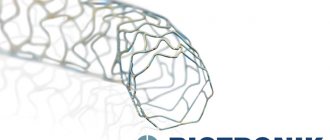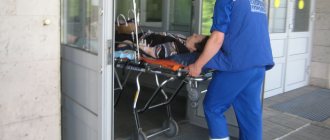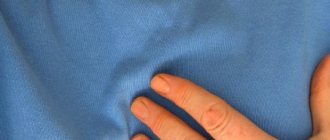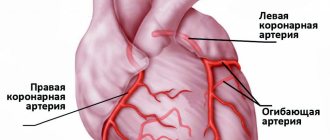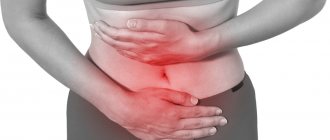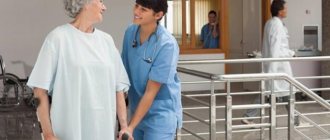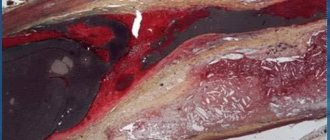Myocardial infarction is an extremely dangerous condition, often leading to serious complications and death of the patient. Older people are especially at risk of developing it. The likelihood of a successful outcome directly depends on the speed of medical care. Patients with myocardial infarction require round-the-clock care during the acute period and long-term rehabilitation after discharge from the hospital. It is advisable that all this time the patient be under the supervision of a specialist with a medical education. The patient's relatives have to combine caring for him with work, family affairs, and personal needs. Because of this, the quality of care decreases and the risks of complications increase. The help of professional nurses in a hospital or rehabilitation center can solve this problem. Proper care after a heart attack speeds up the patient's return to normal life.
Rehabilitation after myocardial infarction
| 82% | 26% |
| patients with a heart attack who have undergone rehabilitation return to work and socially active life | of those who have not undergone rehabilitation can return to work and socially active life |
From the speech of Academician E.I. Chazova at the All-Russian Forum “Development of Sanatorium-Resort Care and Medical Rehabilitation”
The Chernaya Rechka Heart Medicine Center has been operating for more than 60 years. According to our statistics, more than 80% of people who have undergone competent rehabilitation after a myocardial infarction return to a full, harmonious and active life. Those who undergo surgery to restore blood supply to the heart muscle are successfully rehabilitated in 90% of cases.
We talked about how rehabilitation works and how to get help in our article.
What is myocardial infarction
Acute myocardial infarction is damage to the heart muscle due to blockage of one of the arteries of the heart - thrombosis. Thrombosis leads to cessation of blood supply and death of a section of the heart muscle, followed by replacement of connective tissue - scarring. Its signs are clearly visible on the ECG.
A heart attack is a complication of coronary heart disease (CHD), which means it does not occur out of nowhere. When complications occur, atherosclerotic plaques and cholesterol deposits form on the walls of the arteries, which are the main cause.
That is why comprehensive rehabilitation in combination with secondary prevention of heart disease, based on the fight against risk factors and practical lifestyle correction, contributes to reducing mortality.
Many people imagine why a heart is needed. Heartless people rarely enjoy authority in the team. They say that you can imprint the image of a loved one in your heart. A cheerful song makes it easy on him (the heart), but when the song is about to be sung, he (the heart) can sense evil in advance. For example, an impending myocardial infarction . In essence, the heart is a very simple organ. Unlike the folklore hero, who knows how to both dig and not dig, the heart does not even have such a simple choice. The heart can only pump blood. The contractions follow one another completely automatically and almost independently of brain signals. A healthy heart, warmed up to body temperature and filled with blood, will begin to pump it no matter what happens around it. And this is very good: the fewer adjustment knobs, the more reliable the device.
This is probably why it is somehow not customary to pay attention to the most important muscle of the body. All sorts of approaches and repetitions are often performed for the sake of little-needed biceps and abs on the stomach.
Most people know three things about myocardial infarction:
1 - It hurts somewhere in the chest.
2 - This won’t happen to me for another twenty, thirty or fifty years.
3 – It won’t take long to die from this.
So what is myocardial infarction? It must be said right away that this is not a heart rupture, as is commonly believed, although in some cases this can occur as a complication.
A heart attack is a disease in which there is a complete cessation of blood supply to one of the arteries supplying the heart, as a result of which the corresponding section of the heart muscle dies. For the development of myocardial infarction, complete closure of the artery within 15-30 minutes is sufficient. The death of myocardial cells is accompanied by severe pain.
The main classic symptom of myocardial infarction is pressing or burning severe pain behind the sternum, which can radiate (radiate) under the left shoulder blade, into the left arm or lower jaw. Many patients with a heart attack develop cold sweat, the skin takes on a pale gray color, they feel weak and dizzy, shortness of breath and increased heart rate. The pain during a heart attack is severe and prolonged, and attacks last for 10-15 minutes. You cannot try to endure the pain; in case of a heart attack, any delay is dangerous. Therefore, it is urgent to call an ambulance. In addition to chest pain, an alarming symptom is the fear of death.
Fear of death in general is a symptom that has been described for quite a long time, and the point here is that heart pain is not toothache or pain as a result of injury, but pain that appears in the mind as a harbinger of death. One of the doctors of past centuries generally spoke of angina as a “rehearsal for death.”
Below are photographs of people having a heart attack and a typical hand gesture for chest pain.
Let's figure out what are the causes of myocardial infarction or why does it occur? As already mentioned, myocardial infarction occurs due to an acute lack of oxygen in the heart muscle. This can happen under the following conditions.
1. The gradual growth of atherosclerotic plaques leads to the gradual closure of the artery; this process can develop over years or even decades. As a rule, this process is accompanied by symptoms of angina pectoris. At some point, the closure reaches critical levels and a disaster develops.
2. Arterial thrombosis. This scenario is also not developing out of the blue. Arterial thrombosis occurs when the surface of the so-called tire or plaque ruptures. The plaque itself may be small in size and not manifest itself in any way. When a plaque ruptures or tears, a surface is exposed, which, like a magnet, attracts platelets, which in turn, combining with red blood cells, form a blood clot, with subsequent cessation of blood supply.
3. Prolonged arterial spasm is less likely. Although, under stress, adrenaline is released into the blood, causing vasospasm, and causing the heart to beat like a jackhammer. As a result, the heart experiences oxygen starvation.
If the cause of a heart attack is thrombosis of the artery supplying the heart. In this case, the atherosclerotic plaque on which the blood clot has formed may be minimal in size and not affect the blood flow in any way. Therefore, by eliminating the thrombus, the patency of the vessel is completely restored. Thrombolysis helps solve this problem. However, it must be carried out while the thrombus is still fresh, that is, within 6 hours from the onset of a heart attack, then it is most effective and allows you to save most of the heart muscle.
Thrombolytics are drugs that have the ability to dissolve blood clots; they are administered intravenously at a strictly prescribed rate. This is done by the ambulance and the hospital emergency department. There is no need to delay calling the ambulance; time counts by minutes.
Currently, the most effective means of treating a heart attack is life-saving percutaneous coronary intervention: both abroad and in our country, treatment of myocardial infarction is increasingly carried out using interventional technologies - that is, already in the acute period, coronary angiography is performed, the infarct-related artery is detected and stented. or at least temporarily dilate with a special balloon. This procedure is called life-saving percutaneous coronary intervention (PCI) , as it is performed immediately upon the patient’s admission to the hospital, without waiting for the effect of therapy, or when other methods have already been exhausted.
None of the drugs can restore blood flow in the affected artery as well as mechanically eliminating this problem. However, due to the lack of expensive equipment, clinics where such treatment can be performed are not available everywhere. But in our region this opportunity exists. At any time of the day, patients are urgently delivered to the cardiac center in Surgut by air ambulance.
Coronary artery stenting is one of the most important advances in cardiology. The first stent placement in a cardiac artery was performed in 1986. Currently, coronary artery stenting has become an almost outpatient procedure. This is also called “one day surgery.”
Let's remember the popular song:
“If there is a break in the heart,
And you don't know what's wrong with you,
If there is blood beating in the heart,
So to you...
I've had a heart attack!"
What to do?
In fact, you can actually die from a heart attack. But it is much more attractive to stay alive and recover. The chances of such an outcome will increase greatly if you remember the sequence of five actions .
1 - Call 03
Once you understand the symptoms and understand what is happening to you, it is not recommended to waste time. Moreover, you should not be afraid that your authority will fall in the eyes of the rushing doctors if suddenly (God forbid, of course) instead of the expected heart attack you are diagnosed with sciatica. The extent of the lesion, the outcome of the disease and possible complications depend on how many minutes pass from the onset of the attack to first medical aid.
2 - Take aspirin
Aspirin, our native acetylsalicylic acid, is good not only for reducing fever or relieving headaches. In addition to the above effects, acetylsalicylic acid has one more - it quickly thins the blood, facilitating its passage through the narrowed area of the vessel, and reduces the likelihood of blood clot formation.
3 - Riffle through your first aid kit
Better yet, ask others to do it. You need nitroglycerin. This is something that can completely stop an angina attack or at least alleviate it until the doctors arrive. Nitroglycerin (or its analogues starting with “nitro-”) can be found in the pockets of elderly people and in the first aid kits of cars that have been honestly inspected. If you can’t find it, look for validol. No luck again - look in your pockets. Peppermint gum may also help. Menthol will cause the blood vessels of the heart to dilate.
4 - Sit down
The most advantageous body position is sitting with your legs down. You can lie down so that your chest and head are higher than your pelvis. This will make the work of the heart easier.
5 - Don't move
Remember that any movement is an extra strain on the heart. Try to calm down. You don't need extra adrenaline in your blood right now.
What not to do!
...However, we do not impose anything. It is quite possible that right now your heart attack coincided with your impulse to end your life. Then try the following.
- Wait. What if it goes away on its own? Then it will turn out stupid and undignified: a team of serious and busy doctors will arrive, and you are still alive. They will probably reproach you for this. But they will take you to the hospital anyway - a heart attack does not go away on its own, and besides, the logic of your reasoning clearly indicates that you need an eye and an eye.
- Drink coffee While waiting for the self-liquidation of a heart attack, you need to kill time somehow. Over a cup of coffee it will fly by unnoticed, and you won’t have much time. Soaking in a hot bath is an even more promising idea and, by the way, more popular (some people mistake a heart attack for muscle pain, which a hot bath could really relieve).
- Light a cigarette You have to somehow calm down while your fate is being decided and every molecule of oxygen counts. Relax in the best possible way. And fate will be decided much faster after smoking a cigarette.
- Run to the hospital or drive home from work. Urgently take your fate into your own hands, find out the geographical coordinates of the emergency department - and run. And it’s even better while driving: if you’re planning such an effective escape, why not take a couple of pedestrians with you? But if an ending in the spirit of an ancient tragedy is not part of your plans, don’t make unnecessary moves other than pressing two buttons on your phone. And it’s better to ask others about this if they don’t figure it out themselves.
- Treat with folk remedies Especially if this concept includes taking 50 ml of cognac, which supposedly helps in such cases.
Troubles associated with health never ask us when they will appear, but fall out of the blue and change a lot in our lives, if not everything, and in general, only they decide whether to leave us such a luxury - life? Life is a gift from God and throwing it into the furnace of social problems is truly not an affordable luxury.
You and I, day after day, lead a familiar and monotonous lifestyle.
In the morning, coffee, the road to work, a day like a squirrel in a wheel, in the evening on the way home an hour of attention to yourself, friends, shops, shopping, and family at home, worries, problems, repairs, loans, bills, debts and off we go...
And so on day after day, year after year throughout your life.
As a doctor, I am very familiar with the situation when a person plunges headlong into the abyss of everyday and personal problems, receives daily stress, which he lights up, drinks alcohol and eats junk food on the go, and when he stops, he only has the white ceiling of a hospital room before his eyes.
And then life tells us: That’s it, Stop, Finish – Heart attack!
And believe my medical experience, I deal with a heart attack every day, and no matter who you are by race, and no matter what social status you have, everyone is equal before a heart attack!
And when this happens, we begin to rewind the tape of events and beat ourselves in the chest with our fists or, biting our lips, let out tears, but understand more clearly than ever that all this could have been avoided.
I want to tell you with confidence that it is not possible, but necessary! Until it's not too late!
Myocardial infarction is a disease not only for those over 40. The determining factors here are not so much age as heredity and lifestyle. This means that it is better if no one in the family suffers from coronary heart disease, and you yourself do not drink, do not smoke and regularly go for a run. If all this is not about you, then it’s time to take care of your heart health, without putting it off until a critical age.
- Deal with smoking Not only does smoking increase the concentration of bad LDL cholesterol to the detriment of good HDL cholesterol. In addition, nicotine causes tachycardia, which increases the heart's oxygen consumption. At the same time, other components of tobacco smoke bind up to 10% of hemoglobin, reducing the flow of life-giving oxygen to starved cells. Therefore, it is not enough to quit smoking on your own. You will have to show violence to others. Passive smoking also increases the risk of heart attack.
- Get moving Physical inactivity – a sedentary lifestyle – is one of the factors contributing to the development of a heart attack. But just two hours of intense movement a week is enough to reduce the risk of illness by 10%. What exactly you will do all this time - run, jump or have sex - is up to you, but don’t be too philandering.
- Lose kilograms Lose weight to normal. The norm is approximately equal to your height minus a hundred. You can find out more precisely from your doctor. By reducing your weight to the desired figure, you will reduce the risk of atherosclerosis or at least slow down its progression. Besides, extra pounds mean extra millimeters of mercury in your blood vessels, and blood pressure is no joke. Get rid of everything unnecessary and you will get a head start of 3.6 years without a heart attack.
- Go on a drinking binge Only on condition - no alcohol! Replace it with a liter of plain H2O. This way you will definitely avoid dehydration. Not drinking enough fluid can make your blood thicker and therefore more prone to forming blood clots. Five glasses of water a day will dilute it and make it run more cheerfully through the vessels.
- Go fishing and catch more heart attack remedies there. Don't they bite? Go to the grocery store. There you can buy them for money in the fish department. The natives of the Far North eat only fish and do not suffer from heart disease. It's time to follow their example. However, two fish days a week will be enough for you. This way, you will increase the level of omega-3 fatty acids in your body, and this is the ingredient that makes fish the best way to prevent myocardial infarction.
- Have corn flakes for breakfast or buy boiled corn from your grandmothers. It is full of folic acid. The daily intake (about 400 micrograms) reduces the risk of heart attack by 13%. Folic acid reduces the blood level of the amino acid homocysteine, which negatively affects the condition of arterial walls.
- Don't boil Stress is a release of adrenaline, which means more intense work of the heart and an increased need for oxygen in its cells. All this increases the risk of a heart attack by 3 times. In order to develop a philosophical attitude towards life, the standard 10-second delay method is suitable. The point is simple. You need to count to 10 before reacting to a stimulus. Screaming and sputtering after such a long silence is already somehow stupid.
- Chew watermelons They have 40% more lycopene than the most famous source of this antioxidant - tomatoes. In addition, due to the high water content, watermelon lycopene is absorbed faster by the body. Now you are guaranteed another 30% confidence in your heart.
- Warn yourself Forewarned means forearmed, and since atherosclerosis and heart attack are diseases that have a genetic basis, there is a chance to arm yourself. Genetic analysis for predisposition to heart attack is a matter of the future (although perhaps not too distant). For now we will have to limit ourselves to studying the family tree. Just find out which of your relatives suffers from coronary heart disease. The closer the relationship, the greater the danger.
Recently, myocardial infarction has been rapidly getting younger. Nowadays it is not uncommon for it to strike people who have barely crossed the thirty-year threshold. MI (myocardial infarction) is a very common disease and is the most common cause of sudden death. The problem of heart attack has not been completely resolved, and mortality from it continues to increase. In the USA, about 500 thousand people, in France about 120 thousand suffer from large focal MI annually. Mortality from cardiovascular diseases in Russia tends to continuously increase, while in the countries of Western Europe, the USA, Canada, and Australia, over the past decades there has been a steady trend toward a decrease in mortality from IHD. Nowadays, myocardial infarction occurs more and more often at a young age. At the age of 35-50 years, MI occurs 50 times more often in men than in women. The peak incidence occurs between 50 and 70 years of age.
If you want to find out what condition your heart is in, you should undergo special examinations.
Comprehensive cardiac examination (heart examination)
1. An initial consultation with a cardiologist is carried out to collect a history of the patient’s life and previous diseases, so that after carrying out the planned examinations, the doctor can compare the results and have the most complete understanding of the identified problems, and then decide on further management tactics.
2. Laboratory examinations are carried out to assess the functioning of internal organs, as well as the general condition of the body, which allows a more objective assessment of the state of health of the body. A biochemical blood test allows you to assess the level of cardiac enzymes, and a lipid profile allows you to identify the levels of “good” and “bad” cholesterol, as well as the atherogenic coefficient, which allows you to assess the risk of cardiovascular complications. Thyroid hormones can affect your heart rate, so assessing your levels is essential.
3. ECG (electrocardiogram) is the simplest and most necessary method for assessing heart function. With its help, you can assess the heart rate, the state of the myocardial conduction system, identify focal changes in the myocardium, and also suspect many heart diseases.
4. An exercise ECG is performed to assess the heart’s resistance to physical stress. Sometimes, based on the results of this test, the issue of the need for coronary angiography is decided to assess the condition of the coronary vessels supplying the myocardium (heart muscle), which makes it possible to decide on the need for surgical treatment - angioplasty (implantation of stents) or coronary artery bypass grafting (CABG).
5. Daily monitoring of ECG and blood pressure (BP) allows you to evaluate these indicators at different periods of time when the patient leads his usual lifestyle during the day, as well as at night. It is possible to use these two methods simultaneously, which makes it possible to compare ECG changes depending on blood pressure, changes in blood pressure from the ECG and whether they depend on each other in each specific case.
6. Using EchoCG (echocardiography), the volumes of all chambers of the heart, valve apparatus, ejection fraction, systolic and diastolic function and other objective indicators of heart function are assessed.
7. Duplex scanning of neck vessels must be assessed to identify atherosclerotic plaques that narrow the lumen of blood vessels, which can lead to impaired delivery of blood, and therefore oxygen, to the brain, especially against the background of their increased tortuosity and changes in blood pressure (hypertension).
8. An ultrasound of the thyroid gland is performed to assess its condition and compare it with the level of its hormones. If violations are detected, consultation with an endocrinologist will be required. The condition of the thyroid gland directly affects the functioning of the heart.
9. Ultrasound of the abdominal organs is performed to assess the condition of the kidneys, renal vessels and adrenal glands, because disturbances in this area can lead to cardiac problems (eg, hypertension).
10. Based on the results of the examination, the doctor analyzes the results obtained and makes appropriate recommendations for further management tactics.
Quantity
What to do after a heart attack
Rehabilitation after myocardial infarction, along with treatment of the acute phase, is an extremely important process of restoring the body. She helps:
- consolidate the results of treatment,
- prevent the progression of coronary heart disease and possible future complications,
- restore physical activity and cope with psychological trauma,
- create sustainable motivation for secondary prevention throughout life - maintaining a healthy lifestyle.
Rehabilitation takes place in 3 stages: inpatient, rehabilitation center stage, outpatient. In general, rehabilitation can last from six months to a year, depending on how extensive the damage to the heart is.
“Compliance with the stages of treatment helps reduce the risk of repeated operations - by 4 times, repeated hospitalizations - by 6 times, mortality as a result of relapse of the disease - by 2.5 times. Cost savings for the treatment of relapses amount to 30-40%,” E.V. Shlyakhto, chief cardiologist of St. Petersburg and the Northwestern Federal District, President of the Russian Society of Cardiology.
Causes of impaired urine outflow from the kidney
Urological:
- Urolithiasis (kidney, ureteral stones)
- Malignant tumors (ureter, bladder, prostate)
- Benign prostate adenoma (BPH)
- Retroperitoneal fibrosis (Ormond's disease)
Non-urological:
- Spread of tumors from other locations to the ureters
- Hematological (lymphomas, lymphadenopathy)
- Iatrogenic (due to the fault of doctors, for example, during an operation in the pelvis there was damage to the ureter)
Treatment and observation in hospital
Hospitalization is the first step towards recovery after myocardial infarction.
The inpatient stage lasts from 1 to 3 weeks, during this period the patient receives the following medical care:
- surgical treatment - stenting in case of severe damage to the vessel walls;
- drug treatment - with the help of drugs, pain syndromes are eliminated, the load on the heart is reduced and the formation of new blood clots is prevented;
- feasible physical activity - the ability to sit, turn on the bed and wash is restored, light gymnastics and walks are allowed.
At this stage, careful attention from a strong medical team and constant monitoring of the patients' vital signs are of great importance. This is what helps to prescribe the correct treatment in a timely manner.
Symptoms
The most common “warning” symptoms of a heart attack:
- pain or discomfort in the chest (usually for several minutes, repeated attacks, sometimes reminiscent of dyspepsia or heartburn);
- chest pain spreading to the arm(s), shoulders (between the shoulder blades), neck, lower jaw, epigastric region;
- severe shortness of breath (during physical activity or at rest, before the onset of chest pain or simultaneously with them).
An attack of pain may be accompanied by profuse sweating, weakness, nausea and vomiting, dizziness, increased heart rate, rhythm disturbances, a sharp increase and then a decrease in blood pressure. And also intensify or be supplemented by other symptoms that did not appear before.
The clinical manifestations of a heart attack vary from person to person, and the acute condition is not always accompanied by chest pain and discomfort and other common symptoms. At the slightest suspicion of a heart attack, immediately call an ambulance.
Rehabilitation after discharge from hospital
Treatment and monitoring of the patients’ condition continues at the stage of a rehabilitation center or a sanatorium specialized in cardiac rehabilitation. Objectives of the stage: stabilize the physical and psychological state of a person, awaken motivation to lead a healthy lifestyle and adapt to his regime.
During this period the patient receives:
- individual rehabilitation program - pharmacological support and physical recovery;
- practical correction of risk factors: control of blood pressure, blood sugar and cholesterol levels - after a diagnosis of heart attack, this is especially important.
- psychological assistance - analysis of personal characteristics and characteristics of the reaction to illness, psychological support;
- training in healthy lifestyle skills and self-regulation of the body, preparation for returning to work, family and society;
- recommendations for future life - drug therapy and observation, nutrition and physical activity program, lifestyle in its most important manifestations.
The most important process of recovery takes place in the rehabilitation center: the effect of medications is fully revealed, and the contact between the patient and the doctor is as productive as possible. The rehabilitation period is about 3 weeks: 18-21 days.
Let us note that only a center can cope with the task, which combines extensive experience, a solid methodological base and qualified specialists: a cardiologist, psycho- and physiotherapist, doctors and exercise therapy instructors with special training, laboratory and functional diagnostics specialists.
Close cooperation between the patient and medical staff, a positive attitude and a favorable climate also help to minimize the risk of a recurrent attack and return to a harmonious life.
“It will hurt and it will go away”
“In case of a heart attack, you need to act quickly: if you do not open the lumen of the vessel within 6-12 hours to restore blood flow, necrosis of the myocardium will begin,” says Professor of the Department of Preventive and Emergency Cardiology of the First State Medical University.
Sechenova, chief cardiologist of the Moscow region Maria Glezer. Now there are very strict standards for ambulances: the team must arrive 20 minutes after the call. A network of vascular centers has been created where the patient is helped quickly and efficiently. Fortunately, both the emergence of effective drugs and the development of minimally invasive methods (angioplasty, stenting) make it possible to treat a heart attack much more productively. In most cases, after placement of the stent, the patient is discharged within 2-3 days. And he feels quite healthy.
But for this system to work, the patient must get to the clinic according to the principle “the sooner the better.” At the same time, cardiologists warn: every third heart attack passes without symptoms - pain, nausea, vomiting, dizziness. Or with mild symptoms. Even an ECG does not always show changes. But the patient is often in no hurry to see a cardiologist.
“I ask my patients: why sit at home? - says Maria Glezer. “And they are like children to me: “I thought it would pass, it would resolve.” As a result of such carelessness, every second death from a heart attack happens at home, even before the doctors arrive. At the same time, if the patient is taken to a vascular center, the mortality rate from acute heart attack is reduced by 60%.
Supporting rehabilitation results
Rehabilitation after myocardial infarction is a difficult, but positive and fruitful path. Once you pass it, there is no turning back. Only forward to an active and happy life! To do this, it is necessary to maintain the results obtained:
- lead a healthy lifestyle,
- exercise,
- follow a diet and take heart-supporting medications,
- be regularly monitored by specialists.
